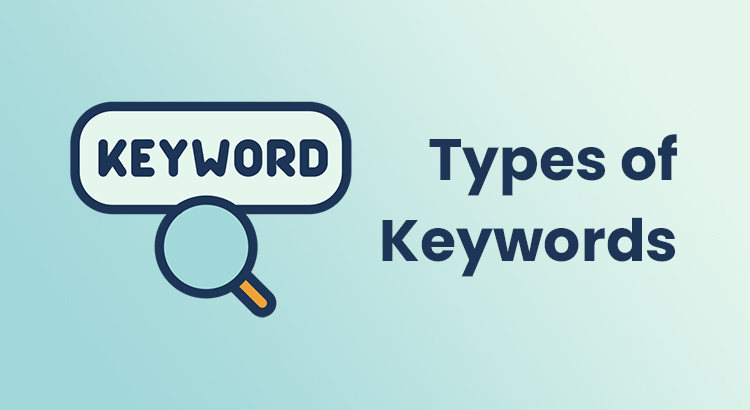Keywords are the backbone of any successful SEO strategy. They act as the bridge between what users are searching for and the content they encounter online. Understanding the various types of keywords is crucial for optimizing your website. This guide will delve into eight essential types of keywords for SEO and explore their significance in driving organic traffic to your website.
Related Article: SEO Keyword Strategy Mastery: Elevate Your Digital Presence
Different Types of Keywords in SEO
Read the following to understand what are the different types for SEO:
1. Seed Keywords
Seed keywords serve as the initial stepping stones in the journey of keyword research. They are the foundational terms or phrases that mark the starting point for uncovering a wealth of related keywords.
While the output of keyword research yields lucrative keywords, seed keywords are the essential input that kickstarts the process.
2. Keywords by Search Intent
Understanding search intent is crucial in crafting effective SEO strategies. It refers to the motivation behind a user’s search query and dictates the type of content they expect to find. Let’s explore the four primary types of intent keywords:
Informational Keywords
Informational keywords are used by individuals seeking knowledge or answers to their questions. These queries often start with question words like “what,” “why,” or “how” and are typically higher in the marketing funnel.
While they may not lead directly to conversions, informational content aids in brand awareness and establishing authority. Examples include:
- “How does caffeine affect sleep?”
- “Benefits of drinking green tea”
- “Why is coffee addictive?”
Navigational Keywords
Navigational keywords are employed when users intend to find a specific website or page. Users already know the brand or product and seek the correct website or physical location.
Ranking highly for navigational keywords is vital for maintaining organic traffic, especially for well-known brands. Examples include:
- “YouTube”
- “Amazon login”
- “Starbucks locations near me”
Commercial Keywords
Commercial keywords are used to research specific brands, products, or services, often indicating an intention to make a purchase or engage in commercial activity.
These keywords help reach high-quality prospects interested in commercial activities. Examples include:
- “Best coffee maker under $100”
- “Reviews of Nespresso machines”
- “Discounts on coffee subscriptions”
Transactional Keywords
Transactional keywords demonstrate a strong intent to buy or take immediate action. Users are ready to convert, making these keywords valuable for SEO and PPC strategies.
They often include action-oriented terms like “buy,” “subscribe,” or “for sale.” Examples include:
- “Buy coffee beans online”
- “Order pizza delivery”
- “Purchase coffee grinder”
3. Long-Tail Keywords (Topical and Supporting)
Long-tail keywords represent specific search queries with a relatively low search volume per month. Their name originates from the search demand curve concept.
In this curve, the most popular searches, known as short-tails or head terms, dominate. Following them are middle-range terms. Lastly, long-tail terms are the most specific and least searched.
4. Low-Competition Keywords
Low-competition keywords, also known as low-hanging keywords, are generally easier to rank for.
They’re favored for their ability to yield faster results in the short term, making them a common recommendation for new websites lacking a strong link profile.
5. Niche Keywords
Niche keywords are specific and focused topics that target smaller, specialized segments within a market. They tend to be easier to rank for due to their specificity, and their high level of detail often indicates strong intent from searchers.
Each niche keyword can attract small yet highly qualified traffic in a short amount of time. Together, they form a foundation for long-tail businesses, such as those selling limited quantities of unique items.
Example keyword: “handcrafted bamboo furniture.” It may have a low search volume, but it targets a distinct audience interested in unique, eco-friendly furniture pieces.
Given its specificity, it’s likely to attract searchers actively seeking such products, making it relatively easy to rank for.
6. Branded and Unbranded Keywords
Ranking for non-branded keywords enables you to capture individuals searching for products or services related to your industry without necessarily being familiar with your brand.
On the other hand, ranking for branded keywords helps you attract users actively seeking information about your company.
7. Competitors’ Keywords
Understanding your competitors’ keywords is invaluable for several reasons. Firstly, these keywords serve as a goldmine of topics for your own website. By knowing your competitors’ keywords, you can:
- Target the same keywords, tapping into the same audience pool.
- Utilize your competitor’s keywords as seed keywords for further research, uncovering related topics and expanding your keyword strategy.
8. Primary and Secondary Keywords
The primary keyword represents the main topic of a page and is the focal point of keyword optimization efforts. It is the single keyword that drives the purpose of conducting keyword research.
Secondary keywords, on the other hand, are closely related to the primary keyword and serve as supporting elements for the page’s optimization.
For example, if the primary keyword is the title of a book, secondary keywords can be used as subtopics to provide additional context and relevance to the page’s content.
Closing Thoughts on Types of Keywords
Having a comprehensive knowledge of various keyword types is essential for crafting a robust SEO strategy that resonates with your target audience. By leveraging a combination of keyword types, you can optimize your website for maximum visibility and organic growth.


